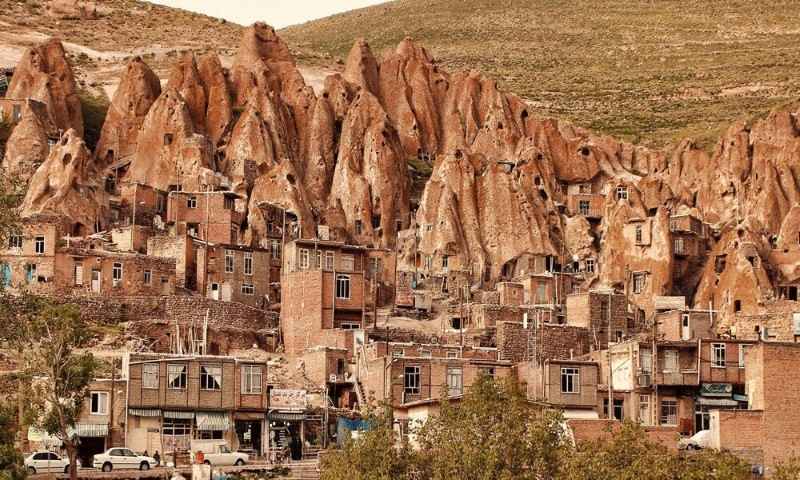Kandovan
A town in the province of East Azerbaijan that is located south of Tabriz, at the foot of an extinct volcano, Kuh-e Sahand (3707 m), the highest point in this province. Troglodyte houses are carved out of soft volcanic tuff rocks: they are the ashes of fiery clouds from ancient Mount Sahand explosions.
In Kandovan, the tuff layer is more than 100 meters thick and erosion from rainfall and runoff has produced conical formations similar to those in Cappadocia.
The houses date back to various eras – some of which are still inhabited – and the town is a popular summer stroll. Although it is located in a remote corner of northwestern Iran, the villagers live like modern cavemen. Present-day Kandovan residents say their village is over 700 years old, created by those who fled the Mongol army and descended into caves to hide. The houses are known as “Karan” in the local Azerbaijani dialect, translated as beehives. In this area of Iran Azerbaijani is spoken by the majority, one of the recognized languages in Iran.
If you are passionate about mountains, mountaineering, anthropology, historical landscapes and the fascinating culture of the Middle East, SITO Travel will help you organize your trip to Iran. Contact us because our experience is born and developed in the field.
Kandovan Cave Houses
Caves are the most energy efficient houses on Earth, the rock provides enough insulation to keep the interior comfortable during the long cold season while the houses stay cool in summer. The first inhabitants were ancient tribes, but these houses have been maintained and inherited from person to person.
To enjoy the typical landscape of the town and have a panoramic view, you have to cross the river, pass over the bridge, and climb the hill in front of the town. Although the area may seem prehistoric, it is actually a renowned tourist center with traditional houses, shops selling the area’s famous honey, and mountain herbs that are key ingredients in many types of healing infusions. Just think of Avicenna’s study based on the properties of these plants, roots, flowers, seeds and leaves that are also part of the Persian culinary culture, that is, today’s Iran.



Comments